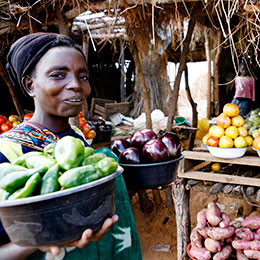In July 2014, the Food and Agriculture Organization of the United Nations (FAO) and the USAID-funded Food and Nutrition Technical Assistance III Project (FANTA) convened a technical meeting in Washington, DC to reach consensus on a global dietary diversity indicator as a proxy for use in assessing the micronutrient adequacy of women’s diets. The discussions at that meeting resulted in the unanimous endorsement of a 10 food group women’s dietary diversity indicator for global use.
To help support the adoption of this indicator by large scale surveys and for use in program monitoring and evaluation, FAO, FANTA, and the University of California at Davis World Food Center (UCD-WFC) partnered together in 2015 to develop a manual to provide indicator data collection and tabulation guidance. As a preparatory step in this process, FANTA and the UCD-WFC invited a group of technical experts to participate in a meeting to provide input into the content and organization of the manual.
At the meeting held on January 26, 2015, experts shared experiences with designing surveys and measuring dietary diversity in field settings, using both paper forms and computer-assisted personal interviewing. Specific issues and challenges were identified prior to the meeting for focused discussion, and included:
- Use of list–based vs open recalls
- Challenges of mixed dishes and foods eaten outside the home
- Level of disaggregation of food groups on questionnaires;
- Defining and operationalizing minimum consumption to “count” as food group consumption
- Adaptation of questionnaires;
- Staffing and training
- Use of tablets/PCs for data collection
- Dealing with seasonality
The group also discussed the content, length and format of the proposed manual.



